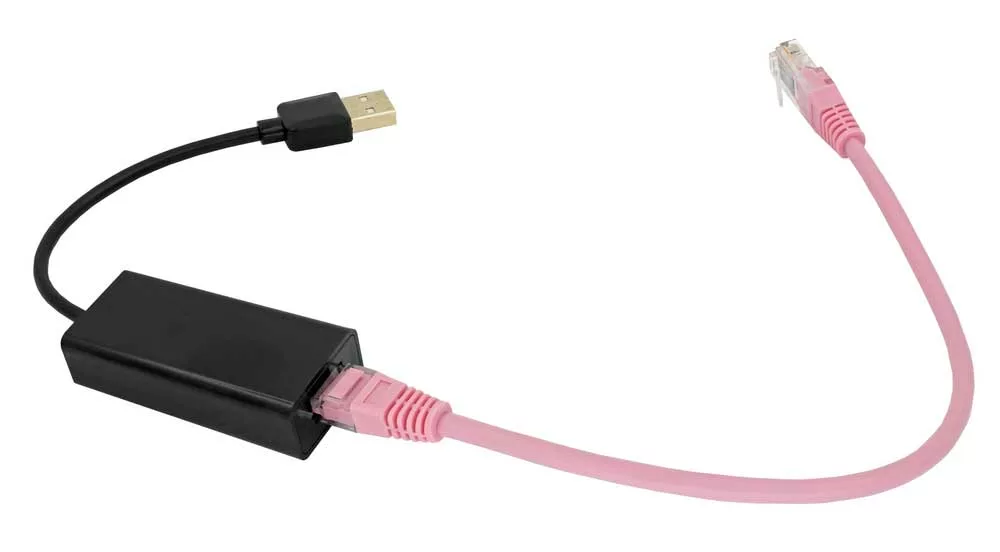How to extend a USB cable with Cat5? Having a short cable length is one of the significant issues of USB cable connections.
The standard length for USB 2.0/3.0 networks falls within 10 feet, and if the cable surpasses this length, the signal quality starts deteriorating.
Thus, it becomes essential for you to connect any USB device to your PC or laptop within a range of 10 ft.
However, this is not possible at certain places like hotels, corporate meetings, restaurants, etc.
Luckily, there are solutions that would increase the USB cable length without affecting the signal quality.
One of the common ones is using a USB cable extender over Ethernet.
What is this and how does it work? Let’s get answers to all these queries in the following article.
Table of Contents
- How does a USB extender over ethernet work?
- Difference between a USB Ethernet extender and a USB ethernet adapter:
- How can you extend a USB cable with a Cat5 USB extender?
- Conclusion:
How does a USB extender over ethernet work?
A USB (Universal Serial Bus) cable extender uses a Cat cable so that the distance between your personal computer and USB devices can be increased.
This extender consists of two main parts: a transmitter and a receiver.
You have to connect the transmitter (TX) to the computer and the receiver (RX) to the USB device.
Once you make these connections, connect the transmitter and the receiver with the help of a Cat cable.
In this way, you can add more length to the USB cable connections.
Often people complain about a slower rate of data transfer with a USB cable extender than with a connection consisting only of a USB cable.
It’s true because resistance is directly proportional to the distance; as the distance increases, the resistance also increases.
But it is also true that most USB devices do not utilize the full speed capacity of USB 2.0 connections i.e.480 Mbps.
As a result, a USB extender over ethernet is a good choice.
Further, the fiber used in the construction of USB extenders over ethernet also decides its data transfer speed.
When the USB cable extender over ethernet was first launched, it worked at the speed of USB version 1.1, which was not enough for high-speed document transfers, cameras, display adapters, and various high-bandwidth purposes.
A USB ethernet extender is compatible with most USB devices, including printers, keyboards, support webcams, scanners, USB flash disks, mice, KVM switches, and many more.
Difference between a USB Ethernet extender and a USB ethernet adapter:
What is a USB ethernet adapter?
How do you connect to broadband internet connections? You connect your computer to a modem or Local Area network with the help of Ethernet cables.
Your computer or laptop has Ethernet ports to connect these ethernet cables and most computers in commercial spaces have more than one Ethernet port.
However, some tablets and lighter notebooks don’t have an Ethernet port, so they cannot have an Ethernet connection.
Instead, they have a wireless connection to conserve the system space.
Alternatively, you can use a USB to Ethernet adapter for such devices. Then, how can you connect this USB Ethernet adapter to your USB device?
- You will see that the adapter has a USB plug and an Ethernet port, so first connect the adapter’s USB plug to the device’s USB port.
- Connect the adapter’s other end i.e., the ethernet port end with an Ethernet cable and the other end of the ethernet cable to the router, hub or modem.
- As soon as you make this connection, you can enjoy full-speed ethernet data transfer speed on your device.
USB to Ethernet extender vs. USB to Ethernet adapter
| Details | USB Ethernet extender | USB Ethernet adapter |
| Function | A USB extender can extend the length of the cable in a USB connection as required in several applications. | A USB to Ethernet adapter allows you to get ethernet connectivity in a computer without an ethernet port. |
| Shape | A two-piece device | One piece only |

A USB to Ethernet adapter with an ethernet cable
How can you extend a USB cable with a Cat5 USB extender?
Follow these steps for an impeccable connection:
- Connect the USB ethernet extender/transmitter to the computer’s USB port.
- Now, connect one end of the ethernet cable to the converted port of the transmitter and the other end of the ethernet cable to the receiver’s rj 45 port.
- Pair your regular USB cable between the USB device and the USB extender and you are good to go.
- To function well, the receiver has to draw power from either a separate power supply or the USB port of the connected device. So if it is necessary, you are supposed to connect the receiver to the power source with the help of a power cable.
You can extend the length of the USB cable up to a distance of 50 meters or 164 feet using a USB extender. However, the final length also depends on the length of the ethernet cable you use.
Conclusion:
Using ethernet extenders allows you to transfer data to far distances without compromising data quality.
Contact Cloom if you want a USB-Ethernet cable extender or adapter for any project.
We have a wide range of high-quality cables and wiring harnesses that can work perfectly for your application.
